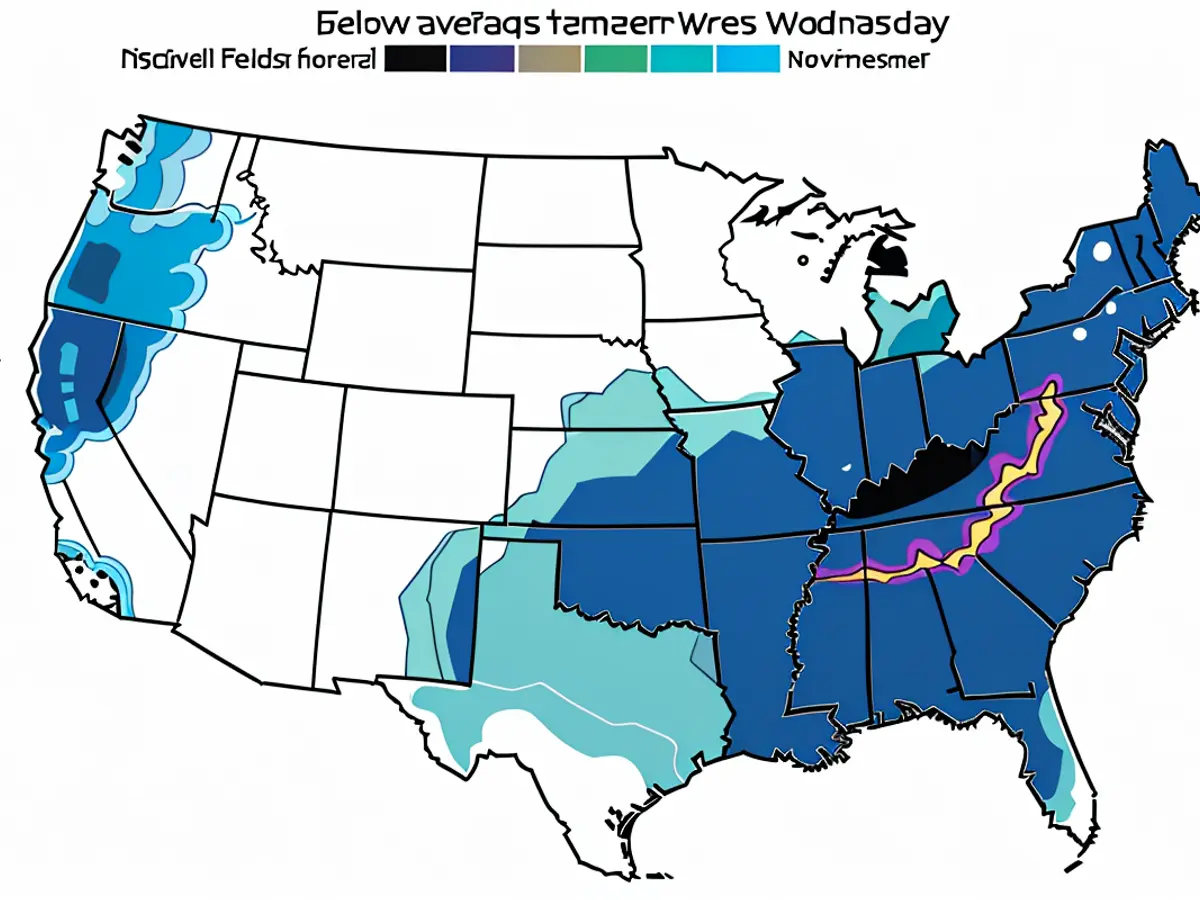Warm Gulf waters could help slow-moving Tropical Storm Debby strengthen to a Category 1 hurricane before landfall
Authorities in Florida and Georgia are urging residents to prepare as the storm makes its way through the near-record warm waters of the Gulf of Mexico. Debby is expected to continue strengthening Sunday after being upgraded to a tropical storm Saturday evening, according to the National Hurricane Center.
Debby has sustained winds of 45 mph and is located about 250 miles south of Tampa, Florida, according to the National Hurricane Center’s 11 p.m. ET Saturday update on the storm.
Hurricane conditions are expected to arrive by late Sunday night or Monday morning, with the outer bands of the storm system making their way on shore during the day Sunday.
Track the Storm: Spaghetti models and more maps here
The strengthening storm tracking up the Florida Peninsula’s western coast prompted county and state officials to issue a string of voluntary and mandatory evacuation orders Saturday, as the hurricane center posted hurricane watches and warnings across several parts of the state, including near Tampa and the Big Bend region.
Florida Gov. Ron DeSantis and Georgia Gov. Brian Kemp declared states of emergency for their states Saturday in advance of the storm’s arrival.
“As the state prepares for a major storm system early this coming week, we urge all Georgians to take precautions to keep their families and property safe,” Kemp said in a message on X.
Storm expected to intensify over Gulf
The slower Debby moves and the longer it sits over warm waters, the more likely the storm is to intensify, leading forecasters to predict the storm could peak at a Category 1 hurricane strength just before landfall.
“Conditions are favorable for strengthening over the Gulf of Mexico with warm sea surface temperatures and light shear. Intensification is likely to be slow during the first 12–24 hours, then proceed at a faster rate after the cyclone develops an organized inner core,” the National Hurricane Center said.
By early Monday, Debby is expected to move into the Apalachee Bay area of Florida as it moves northward over the Gulf, according to the Weather Prediction Center.
The Apalachee Bay area, which includes parts of Taylor, Jefferson, Wakulla, and Franklin counties, can expect to get drenched with heavy rain from Debby on Sunday, increasing the possibility of flash flooding in several spots, the hurricane center said.
Heavy rain could linger for days
As a slow-moving Debby churns along the Georgia-Carolina coastline heading into the new week, it could lead to seemingly endless amounts of rain for days, with totals potentially reaching up to 12 inches.
hurricanes: Read more
- Hurricane categories, explained
- Basic hurricane terminology you should know
- Notable statistics from US hurricane history
- 2024 Atlantic hurricane season preview
- How to stay safe in the aftermath of a hurricane
The heaviest rain totals could even top 18 inches or more depending on how long Debby meanders, with some forecast models showing Debby could linger through at least Thursday. “This rainfall will likely result in areas of considerable flash and urban flooding, with significant river flooding expected,” the National Hurricane Center said.
A warmer atmosphere holds more moisture and can dump heavier rain. Warmer oceans can fuel stronger hurricanes, packing a punch with higher storm surge thanks to sea-level rise. Destruction from water – both storm surge and flash flooding from heavy rain – claim the most lives in tropical systems.
With an uptick in the intensity forecast comes an increase in the storm surge forecast. Storm surge is the ocean water pushing inland on the onshore winds of the hurricane. Storm surge flooding above ground could rise to 6 to 10 feet along Florida’s Big Bend.
Tampa Bay is expecting 2 to 4 feet of storm surge. Marco Island and other areas of southwest Florida will see 1 to 3 feet of storm surge.
Warmer air and ocean temperatures fueled by human-induced climate change can lead to wetter tropical systems.
The North Florida region nestled between the Panhandle and the rest of the state’s peninsula took a devastating hit last August from Category 3 Hurricane Idalia, and now faces a new threat from Debby.
Editor’s note: Affected by the storm? Use CNN’s lite site for low bandwidth.
The warmer sea surface temperatures and light shear in the Gulf of Mexico are favorable for Debby's intensification, with the storm predicted to peak at a Category 1 hurricane strength before landfall. Residents in the Apalachee Bay area, including Taylor, Jefferson, Wakulla, and Franklin counties, should prepare for heavy rain from Debby on Sunday, increasing the possibility of flash flooding.








